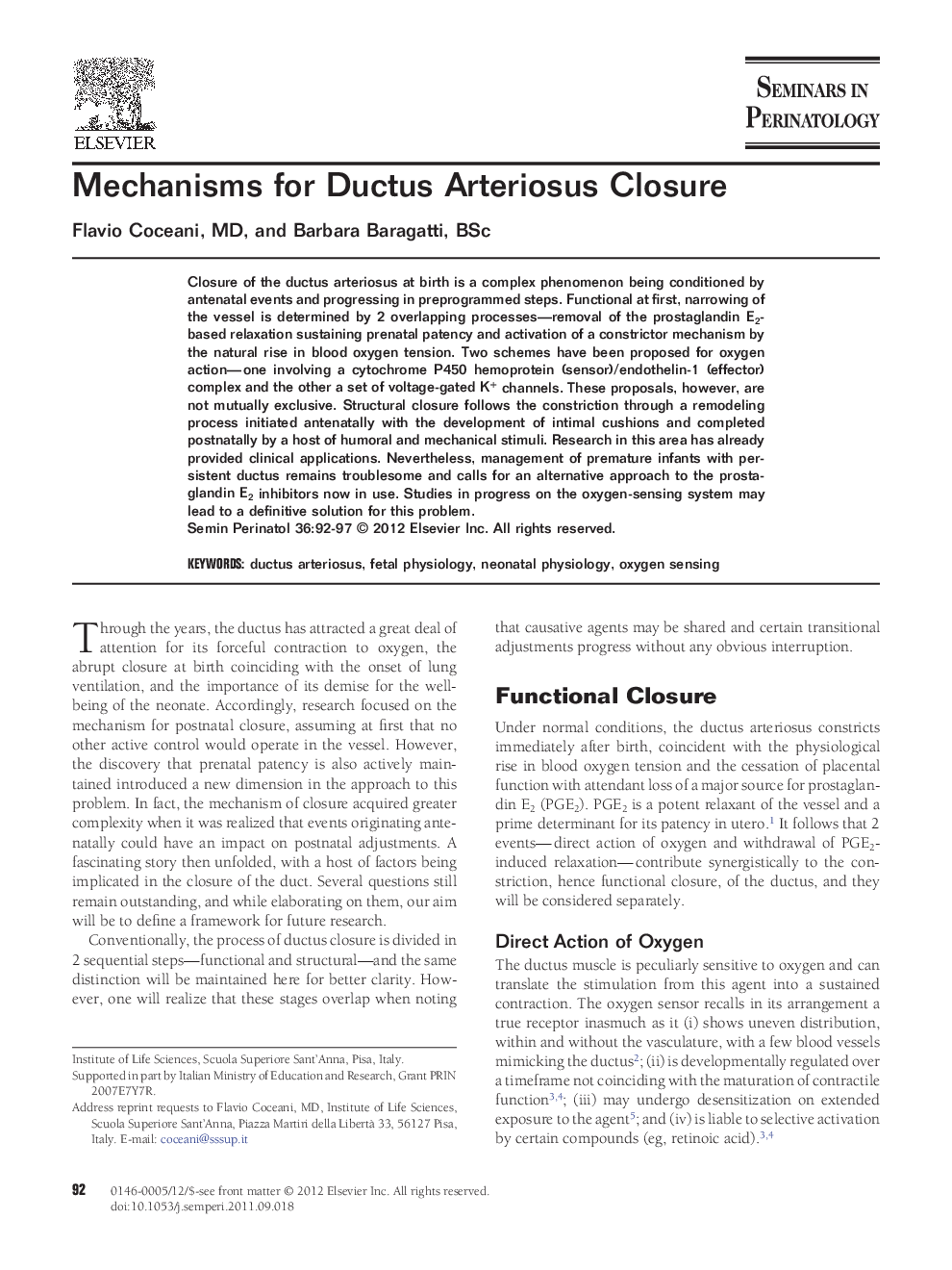| Article ID | Journal | Published Year | Pages | File Type |
|---|---|---|---|---|
| 3836248 | Seminars in Perinatology | 2012 | 6 Pages |
Closure of the ductus arteriosus at birth is a complex phenomenon being conditioned by antenatal events and progressing in preprogrammed steps. Functional at first, narrowing of the vessel is determined by 2 overlapping processes—removal of the prostaglandin E2-based relaxation sustaining prenatal patency and activation of a constrictor mechanism by the natural rise in blood oxygen tension. Two schemes have been proposed for oxygen action—one involving a cytochrome P450 hemoprotein (sensor)/endothelin-1 (effector) complex and the other a set of voltage-gated K+ channels. These proposals, however, are not mutually exclusive. Structural closure follows the constriction through a remodeling process initiated antenatally with the development of intimal cushions and completed postnatally by a host of humoral and mechanical stimuli. Research in this area has already provided clinical applications. Nevertheless, management of premature infants with persistent ductus remains troublesome and calls for an alternative approach to the prostaglandin E2 inhibitors now in use. Studies in progress on the oxygen-sensing system may lead to a definitive solution for this problem.
